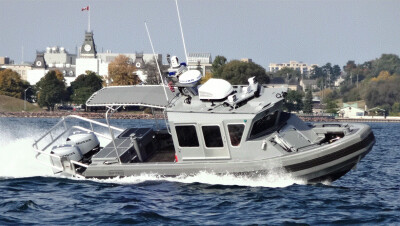U.S. Senators Maria Cantwell (D-Wash.) and Lisa Murkowski (R- Aalska) have introduced a bill to build six icebreakers. The Icebreaker Recapitalization Act would authorize the U.S. Navy to construct up to six heavy icebreakers. The new icebreakers would be designed and operated by the Coast Guard. The Coast Guard is the sole service responsible for icebreaking missions.
“Today we take a strong, bipartisan step towards investing in the Coast Guard Arctic infrastructure and operations by calling for serious investments in our polar icebreaking fleet.” Cantwell said. “Our legislation makes sure that the United States is able to protect our interests in the Arctic, and it gives the men and women in the Coast Guard and Navy the tools they need to do their jobs. Icebreakers protect America’s Arctic interests and support Washington state shipbuilding jobs.”
“As an Arctic nation, America must be a global leader towards an Arctic future as this dynamic region opens up to new opportunities; by contrast, countries from Russia to Canada to China to even India see the worth and importance in investing in icebreakers,” said Senator Lisa Murkowski, chair of the U.S. Senate Arctic Caucus. “From a military perspective, this is an imperative; from an economic development viewpoint, it is a down payment on an Arctic future, and as a scientific research opportunity, it opens up a new world of knowledge.”
According to the Coast Guard High Latitude Study released to Congress four years ago, the U.S. needs six heavy duty and four medium icebreakers to meet the statutory and mission requirements of the Coast Guard and the Navy. However, while Russia, China and other nations are developing their icebreaking capability, the United States has only two operational icebreakers, the heavy icebreaker the Polar Star and medium-duty Healy which was designed for scientific research.
The heavy-duty icebreaker Polar Star was recently retrofitted in Seattle after years in ‘caretaker’ status, having been brought back into service in 2013. A second heavy-duty icebreaker, the Polar Sea is currently at risk for the scrap heap.
Polar ice caps are melting at an unprecedented rate, leaving areas of the Arctic Ocean ice-free in the summer months, creating new challenges for national security, law enforcement, environmental protection, and maritime safety. Increased accessibility makes the Arctic attractive to commercial entities and foreign governments for shipping, tourism, fishing, natural resource development and other economic interests.
The U.S. is lagging behind other Arctic nations such as Russia in developing and maintaining polar icebreakers. Russia operates 11 icebreakers with comparable capabilities to the United States, six more under construction – and plans for five additional icebreakers.




